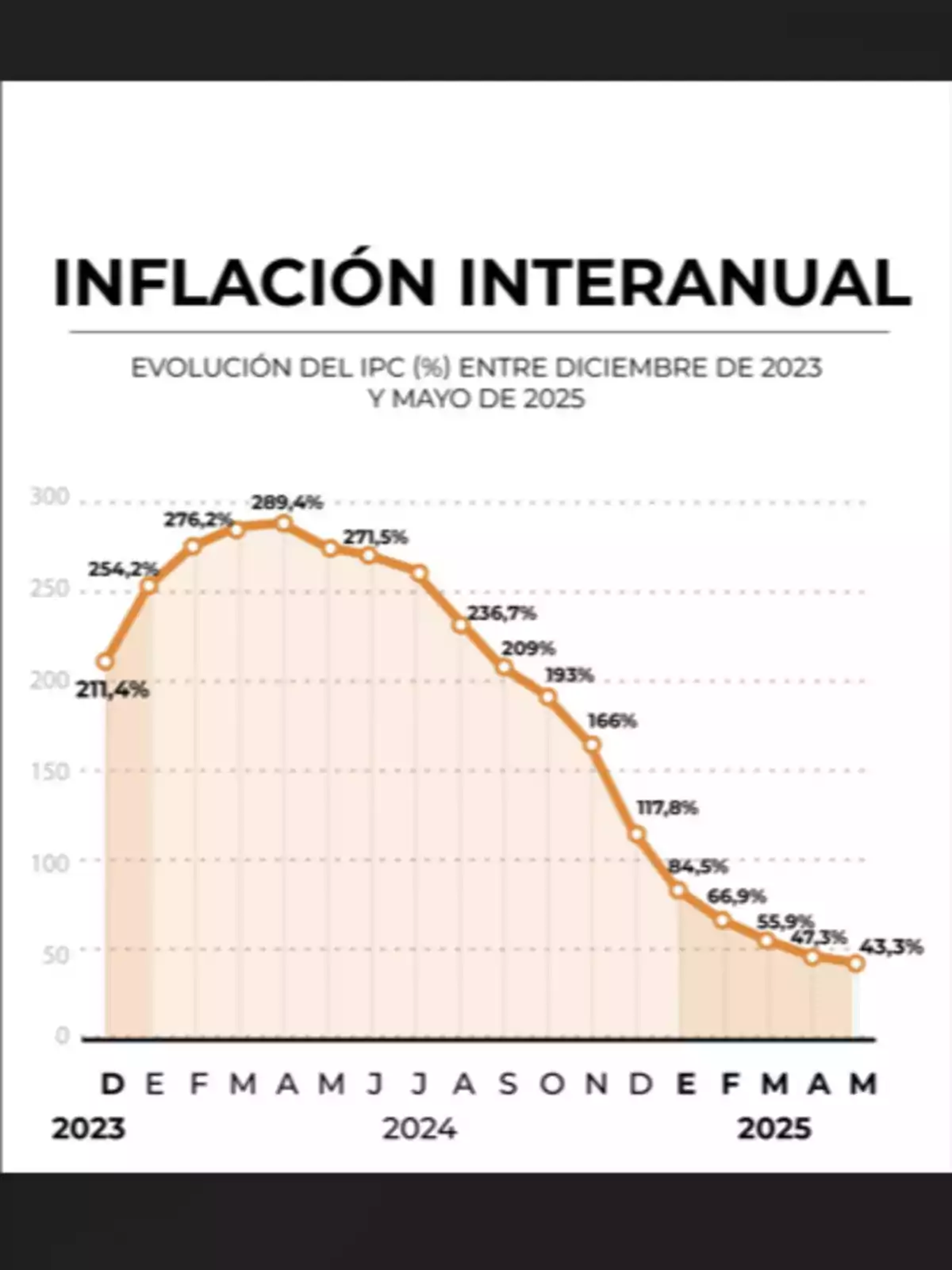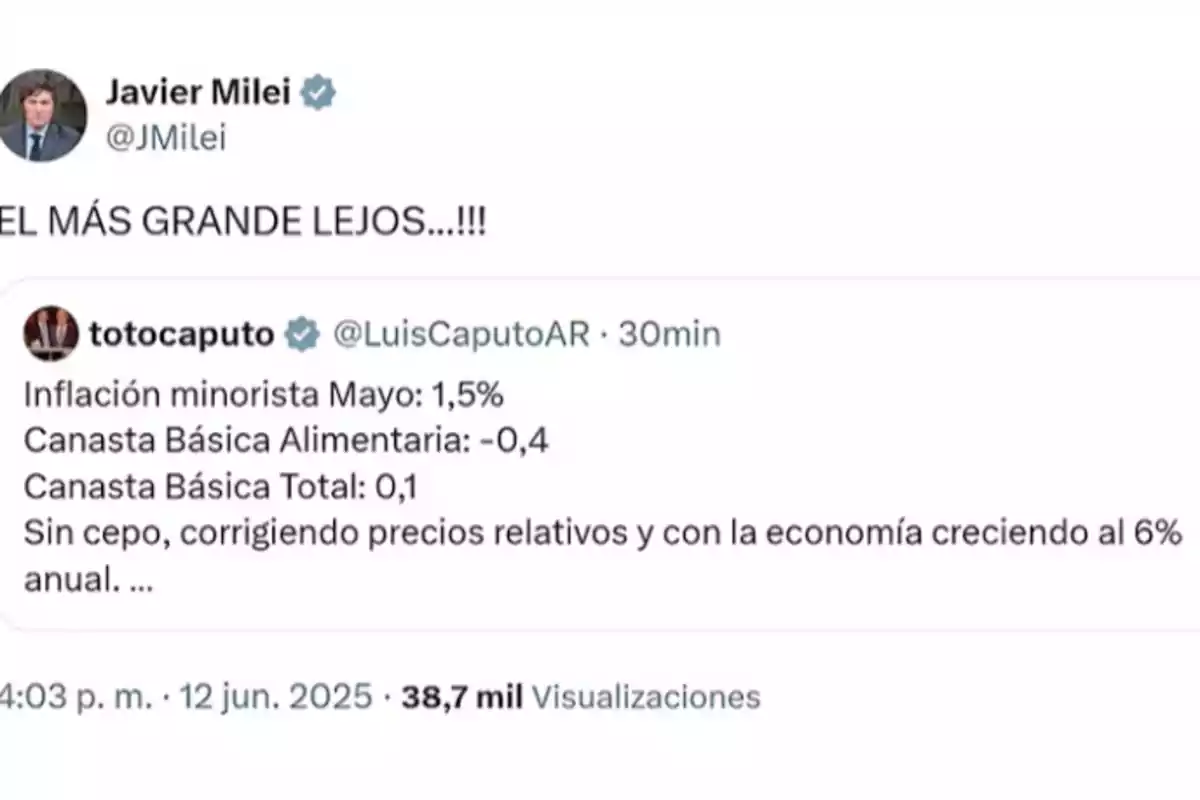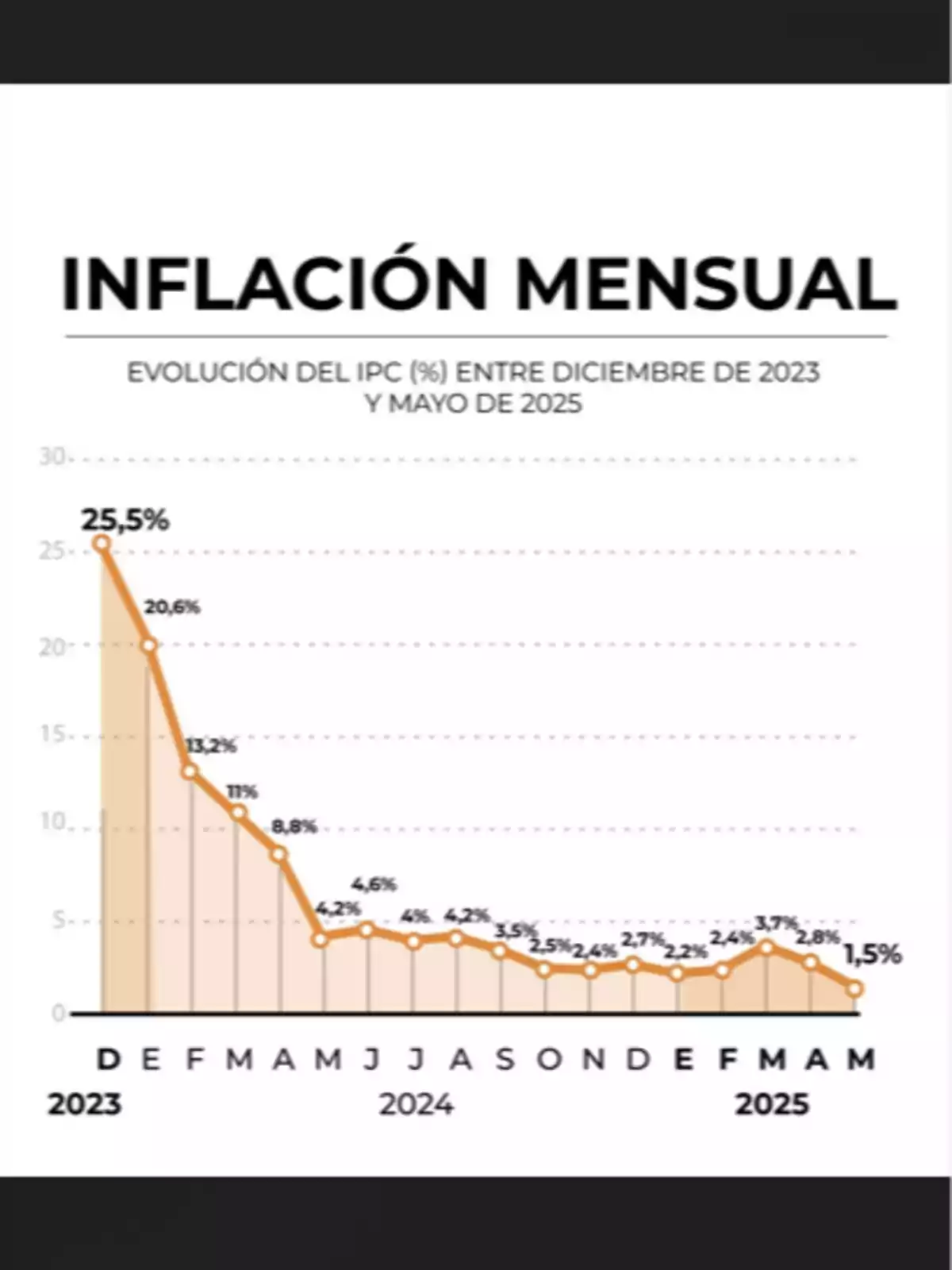
Inflation: Economists celebrate May's data and predict that the decline will continue
Historic May: Milei achieves the lowest inflation in four years and consolidates disinflation
The economic turnaround promised by Javier Milei is materializing with concrete data. In May, the recorded inflation was 1.5%, the lowest rate in four years, according to INDEC. The figure not only exceeded the expectations of private consulting firms, which had forecast a slightly higher number, but also consolidated the disinflation path that the Government has been pursuing with determination since the beginning of its administration.
The May figure represents the lowest monthly increase of theConsumer Price Index (CPI) since May 2020. For analysts, the explanation goes beyond seasonality: it is a combination of consistent economic policy, fiscal discipline, and solid control of monetary issuance.

"The deceleration of inflation is no coincidence," stated Eugenio Marí, chief economist at the Fundación Libertad y Progreso. He justified: "It responds to two essential issues: the reduction of public spending to eliminate the fiscal deficit and the restoration of the Central Bank's balance sheet." In the same vein, Marí celebrated that BCRA no longer acts as the Treasury's financier, but instead focuses on providing Argentinians with a stable currency.
From C&T Consultores, its director Camilo Tiscornia highlighted that seasonal products fell by 2.7%, a drop mainly explained by fruits and vegetables. This phenomenon helped core inflation (excluding seasonal and regulated items) to be 2.2%, one point lower than in April and also the lowest since 2020.

Tiscornia attributed the success to a triple combination: a macroeconomy consistent with the disinflation objective, the drop in fuel prices, and the correction of previous increases in fresh food, in addition to the impact of the Hot Sale on consumption. However, he warned that June could show a slight increase: "Partial data from our survey for the GBA region suggest that this month's inflation will be higher than May's."
Meanwhile, Antonio Aracre also celebrated the news: "It was foreseeable. The fiscal anchor, no monetary issuance, and the free floating of the dollar at an almost cruising level of $1,200 allowed us to infer that the economic plan is very solid." He anticipated: "On Monday, wholesale prices could, for the first time, show a figure starting with zero, maybe 0.9. It is a symbol and a very important achievement for the Government and in record time."

The consulting firm LCG also highlighted the key role of the Food and Beverages sector, which went from increases of 5.9% in March, to 2.9% in April, and only 0.5% in May. They noted nominal drops of -1.7% in fruits and -9.8% in vegetables in GBA. This sector explained 0.7 percentage points of the moderation in the general index.
Additionally, LCG pointed out that other sensitive sectors also showed deceleration:
Clothing: from 3.8% in March to 0.9% in May.
Recreation and Culture: from 4% to 1.7%.
From Adcap Grupo Financiero, Federico Filippini stated that the contribution of seasonal prices to May's decline was "disproportionate" and highlighted that underlying prices remained stable at 2.2%, while services dropped to 2.7% from the previous 3%.
Filippini emphasized that inflation seems decoupled from the dollar, which reflects the strength of the libertarian program: "The Government managed to implement a real exchange rate depreciation of around 10% without generating instability. On the contrary, this helped anchor inflation expectations."
From Grupo SBS, Juan Manuel Franco added that the drop in fuel prices, the reduction of tariffs and domestic taxes, and well-anchored nominal expectations were key factors. He also stressed that the curve of peso interest rates is above dollar futures, a sign of market confidence in stability.
Damián Vlassich, strategist at Invertir Online, summarized the phenomenon in three pillars:
Stable exchange rate,
Regulated prices with controlled dynamics,
Seasonal products on the decline (-2.7%).
Although he acknowledged that the path is not without challenges, he warned that the evolution of services and wages will need to be monitored, as they could generate some resistance to the downward trend in inflation.
More posts: